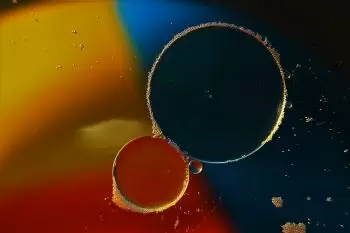
From its definition, the first law of thermodynamics presents three limitations on thermodynamic processes:
-
We cannot know whether a process is reversible or irreversible.
-
It does not indicate whether heat can flow from a cold body to a warm body.
-
In practice, it is not possible to convert thermal energy into an equivalent amount of work.
Before analyzing each of these limitations in detail, it is helpful to know what the first law of thermodynamics (or law of conservation of energy) establishes:
What does the first law of thermodynamics tell us?
The law of energy conservation states that the change in the system’s total energy is equal to the difference between the supplied or transmitted heat and the supplied or delivered part. The total energy is the sum of kinetic energy, potential energy, internal energy, and other forms of energy:
For a system thermally isolated from the environment (closed system), the theorem on the conservation of total energy applies:
-
The internal energy of a thermally insulated system remains constant.
-
Energy can neither be created nor destroyed. It only can be converted into another form of energy.
According to the first law of thermodynamics, a perpetual mobile is not possible. A machine that generates work without supplying it with work or heat without making changes when doing work.
Limitation 1: We cannot know if a process is reversible or irreversible
A process is reversible if it can occur in one direction or the other. For example, water can be frozen and thawed by exchanging heat in a thermodynamic process in both directions.
On the other hand, the burning of a piece of paper is an irreversible process. After the piece of paper has been consumed, it has become smoke, but it is impossible to convert it back into writing.
One of the limitations of the first law of thermodynamics is that we cannot know if a process is reversible or not. Under this law, nothing would prevent us from turning smoke into paper.
Limitation 2: There is no restriction on the direction of heat flow
All bodies have specific energy inside them: the internal energy of the system. Sometimes this energy can flow as heat from one body to another.
Experience tells us that we add hot water to glass at room temperature, the glass is going to heat up: part of the energy in the water has been transferred to the glass in the form of heat. The direction of heat transfer is clear: heat flows from the hot body to the cold body.
However, is it possible for heat to flow backward? Is it possible that part of the energy in the glass is transferred to the water, heating up even more? From experience, we know not, but the first principle of thermodynamics does not restrict the direction of heat energy transfer. In theory, nothing would stop us.
Limitation 3: Not all heat energy can be converted to work
According to the first law, the energy of a thermodynamic process’s total energy remains constant. However, this does not happen in practice, and there are always losses, especially in open systems.
For example, in a combustion engine, it is impossible to convert all the thermal energy generated during combustion into mechanical work.
According to Carnot's theorem: "There cannot be a heat engine that works between two given heat sources has greater efficiency than a Carnot one that works between those same heat sources."
And after these limitations?
To solve all these limitations of the first law of thermodynamics, little by little, the other laws of thermodynamics emerged.
The second law of thermodynamics establishes the existence of entropy as a function of the state of a thermodynamic system. This law introduces the concept of absolute thermodynamic temperature.
In an isolated system, the entropy remains unchanged or increases (in non-equilibrium processes), reaching a maximum when thermodynamic equilibrium is established.
Finally, the zero law of thermodynamics appeared, which states that "if two systems that are in thermal equilibrium with a third system, they are also in equilibrium with each other." This law was the last, but they placed it ahead of the other principles of thermodynamics.